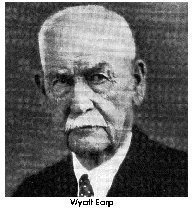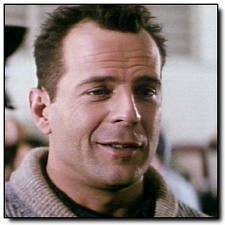
Car horns are usually electric, driven by a flat circular steel diaphragm that has an electromagnet acting on it in one direction and a spring pulling in the opposite direction. The diaphragm is attached to contact points that repeatedly interrupt the current to that electromagnet causing the diaphragm to spring back the other way, which completes the circuit again. This arrangement opens and closes the circuit hundreds of times per second, which creates a loud noise like a buzzer or electric bell, which sound enters a horn to be amplified. There is usually a screw to adjust the distance/tension of the electrical contacts for best operation. A spiral exponential horn shape (sometimes called the "snail") is cast into the body of the horn, to better match the acoustical impedance of the diaphragm with open air, and thus more effectively transfer the sound energy. Sound levels of typical car horns are approximately 107–109 decibels, and they typically draw 5–6 amperes of current.
Horns can be used singly, but are often arranged in pairs to produce an interval consisting of two notes, sounded together; although this doubles the sound volume, the use of two differing frequencies with their beat frequencies and missing fundamental is more perceptible than the use of two horns of identical frequency, particularly in an environment with a high ambient noise level. Typical frequencies of a pair of horns of this design are 500 Hz and 405–420 Hz (approximately B4 and G♯4, minor third).
Some cars, and many motor scooters or motorcycles, now use a cheaper and smaller alternative design, which, despite retaining the name "horn," abandons the actual horn ducting and instead relies on a larger flat diaphragm to reach the required sound level. Sound levels of such horns are approximately 109–112 decibels, and they typically draw 2.5–5 amperes of current. Again, these horns can be either single, or arranged in pairs; typical frequencies for a pair are 420–440 Hz and 340–370 Hz (approximately G♯4–A4 and F4–F♯4) for this design.
A horn grille is a part of some designs of car or other motor vehicle that has an electric horn, such as a motor scooter.
The radiators of modern cars no longer determine the shape of the grilles, which have become more abstract, the radiator being of different proportions from the grille and over 15 centimetres behind it. Now grilles are usually designed so the sound of a horn can readily come out through them. Those designs that echo the shape of the grille no longer have front fenders with rather large crevices that accommodate trumpet-shaped horns. Thus some cars, often British ones, have a pair of round horn grilles on either side of the radiator grille, with a horn behind each. A luxury car's horn grilles are usually chrome-plated.
Cars with rear engines, such as the Volkswagen Beetle and the early Porsches, necessarily have no radiator grilles in front, and so have horn grilles placed below their headlights. Some motor scooters have this feature as well, placed below the handlebars. Their horn grilles may be made of cheap plastic. These vehicles and the cheaper cars have only one horn.
Truck (lorry), and bus horns may be electrically operated and similar to car horns, but are often air horns driven by air from an air compressor, which many trucks and buses have in order to operate the air brakes. The compressor forces air past a diaphragm in the horn's throat, causing it to vibrate. Such air horns are often used as trim items, with chromed straight horns mounted on top of the cab. This design may also be installed on customized automobiles, using a small electrical compressor. Usually two or more are used, some drivers go so far as to install train horns. The frequencies vary to produce a variety of different chords, but in general are lower than those of automobile horns—125–180 Hz (approximately C3–G3). Sound levels are approximately 117–118 decibels.
This is the easiest breakfast casserole you'll ever make. No, really. Thanks to some shortcut frozen ingredients, this Make-Ahead Breakfast Casserole can be put together in no time. And since it's a make-ahead casserole, you can make it an hour in advance or even a day in advance!
- 6 frozen waffles, cut into 1-inch cubes
- 1 (9.6-ounce) package frozen sausage crumbles, thawed
- 1 cup shredded sharp Cheddar cheese, divided
- 6 eggs
- 1 1/4 cups milk
- 1/2 teaspoon salt
- maple syrup (optional)
- Coat an 8-inch square baking dish with cooking spray. Layer half of waffles on bottom of prepared dish. Top with half of sausage crumbles and 1/2 cup of cheese. Repeat layer.
- In a medium bowl, whisk eggs, milk, and salt until well combined. Pour egg mixture evenly over waffle mixture.
- Cover baking dish with plastic wrap. Refrigerate at least 1 hour, or overnight.
- Before serving, preheat oven to 350º.
- Bake 45 to 50 minutes, or until eggs are set in center. Drizzle with syrup and serve.
And births this date include...

1955 – Bruce Willis, American actor
Every March 19th, National Certified Nurses Day celebrates the certified nurses who impact lives every day.
Certified nurses dedicate their entire careers to helping others and often work long, hard hours. The day honors and recognizes them and their significant achievements. Their advanced skills require continuing education, re-certification, and continued knowledge of ever-changing technology. Certified nurses balance clinical needs and patient care. Helping patients meet their healthcare goals in complex and challenging times makes a Certified Nurse’s commitment even more valuable.
A nursing career is as varied as a doctor’s. They specialize and can earn certifications in specialties and sub-specialties. Certified nurses study and take certification exams to demonstrate their competency, skill, and knowledge in a field. Board certification is available in a variety of fields including:
- Ambulatory Care Certification
- Clinical Nurse Specialist Certification
- Informatics Certification
- Medical-Surgical Certification
- Nurse Practitioner Specialty Certification
- Pediatric Nursing Certification
- Psychiatric Nursing Certification
Nurses can also obtain sub-specialty certifications. Certified nurses provide skilled experience in the medical fields where they work. They also improve the quality of the health care provided. Now, more than ever, health care needs more qualified nurses providing the care that we need.
HOW TO OBSERVE
Thank a certified nurse, and all they do. If you know someone who is striving to become a certified nurse, encourage them in their endeavors. Encourage certified nurses to attend job fairs to share their experiences and inspire others to become certified nurses. Consider taking a certification you’ve had your eye on. Learn more about the certification process. Speak to other certified nurses.
NATIONAL CERTIFIED NURSES DAY HISTORY
National Certified Nurses Day was established on March 19th in honor of Margretta (Gretta) Madden Styles (March 19, 1930 – November 20, 2005), MSN, Ph.D. Her pioneering and distinguished career inspired nurses around the country. She was recognized worldwide for her leadership and contributions to the study and practice of nursing.


.jpg)









No comments:
Post a Comment